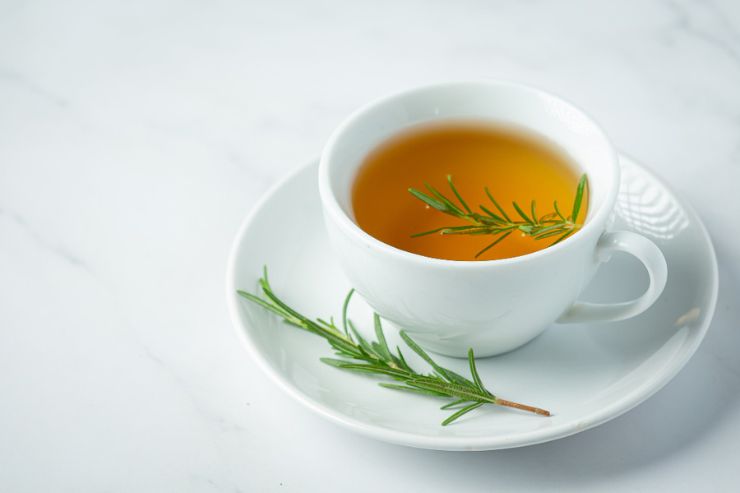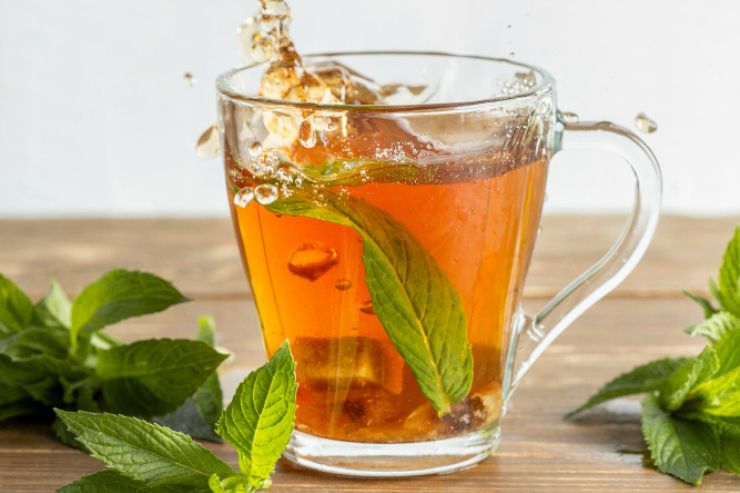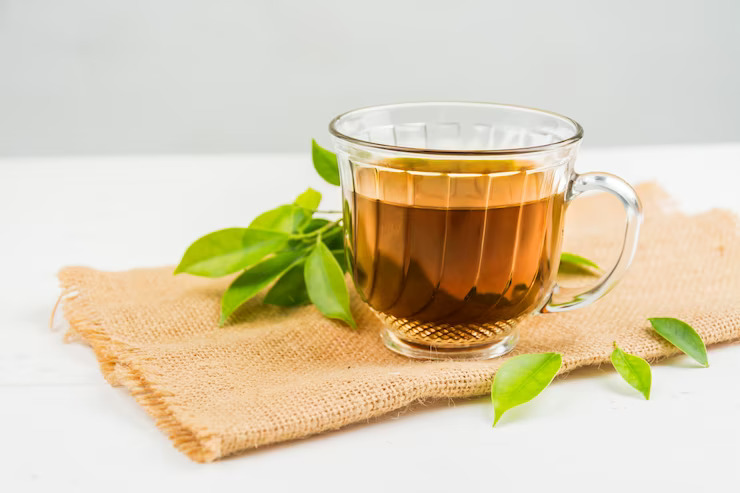Tea is a popular and widely consumed beverage that has been enjoyed for centuries. Not only does it provide a refreshing and soothing experience, but it also offers numerous health benefits. From its rich antioxidant properties to its potential in promoting heart health, tea has become a go-to choice for individuals seeking a healthier lifestyle. In this article, we will explore the various health benefits of tea and how it can positively impact your well-being.
Introduction
Tea, derived from the leaves of the Camellia sinensis plant, is an ancient beverage that originated in China thousands of years ago. Over time, its popularity spread across the globe, and today it is cherished by people of different cultures and backgrounds.
History and Origins of Tea
The history of tea dates back to ancient China, where it was initially used for its medicinal properties. Legend has it that the Chinese Emperor Shen Nong discovered tea when tea leaves accidentally fell into his boiling water. Fascinated by the aroma and taste, he began to explore its potential benefits. From there, tea spread to neighboring countries like Japan and Korea, eventually making its way to Europe and the rest of the world through global trade routes.
Buy Tea Online in India from Best Online Tea Store. We have Premium Quality at the Best Price with 100% Delicious Loose Leaf Organic Tea with Free Shipping.
Types of Tea
There are several types of tea, each with its unique characteristics and flavors. The most common varieties include green tea, black tea, oolong tea, white tea, and herbal tea. The differences in processing methods and oxidation levels contribute to the distinct qualities of these teas.
Nutritional Composition of Tea
Tea is a natural source of various beneficial compounds. It contains polyphenols, which are powerful antioxidants that help protect the body against harmful free radicals. Additionally, tea contains methylxanthines, such as caffeine and theobromine, which provide stimulating effects. It also contains vitamins, minerals, and amino acids that contribute to its nutritional profile.
Health Benefits of Tea
Tea offers a wide range of health benefits that can positively impact various aspects of your well-being. Let’s explore some of these benefits in detail:
Antioxidant Properties
Tea is renowned for its high antioxidant content, particularly in the form of polyphenols. These antioxidants help neutralize free radicals in the body, reducing oxidative stress and inflammation. By protecting cells from damage, tea may help prevent chronic diseases and support overall health.
Boosts Immune System
The immune-boosting properties of tea can be attributed to its various bioactive compounds. Tea consumption has been associated with improved immune function, thanks to its ability to enhance the activity of immune cells and promote the production of antibodies. Regular intake of tea may help reduce the risk of infections and support a healthy immune system.
Promotes Heart Health
Numerous studies have suggested that tea consumption can have a positive impact on heart health. The antioxidants present in tea help lower the levels of LDL cholesterol, also known as “bad” cholesterol, while increasing the levels of HDL cholesterol, the “good” cholesterol. This balance is crucial in maintaining cardiovascular health and reducing the risk of heart diseases.
Aids in Weight Management
For individuals looking to manage their weight, tea can be a valuable ally. Certain compounds in tea, such as catechins, have been shown to boost metabolism and increase fat oxidation. Regular consumption of tea, combined with a balanced diet and exercise, may assist in weight management and help achieve desired weight goals.
Improves Digestive Health
Tea has been associated with various digestive benefits. It can help alleviate gastrointestinal discomfort, promote healthy digestion, and even reduce the risk of digestive disorders. Compounds found in tea, such as tannins and catechins, have been shown to possess antimicrobial properties, which can help combat harmful bacteria in the digestive tract.
Enhances Mental Well-being
The act of sipping a warm cup of tea can have a calming effect on the mind. Tea contains an amino acid called L-theanine, which has been found to promote relaxation and reduce stress levels. This unique combination of L-theanine and a moderate amount of caffeine in tea can improve focus, concentration, and overall mental well-being.
Supports Bone Health
Tea consumption has been linked to improved bone density and a reduced risk of osteoporosis. The flavonoids and phytochemicals present in tea play a role in promoting bone health by enhancing bone formation and strength. Regular intake of tea, especially green tea, may contribute to maintaining healthy bones as you age.
Reduces the Risk of Certain Cancers
The powerful antioxidants found in tea, particularly polyphenols, have been studied for their potential anti-cancer properties. Research suggests that tea consumption may help reduce the risk of certain cancers, such as breast, colorectal, prostate, and lung cancers. However, it’s important to note that tea should not be considered a cure or standalone treatment for cancer.
Assists in Diabetes Management
Tea, especially green tea, has shown promise in helping manage blood sugar levels. The polyphenols in tea can enhance insulin sensitivity and regulate glucose metabolism. Regular consumption of tea, as part of a balanced diet and lifestyle, may aid in diabetes management and reduce the risk of complications associated with the condition.
Hydration and Detoxification
While tea does contain caffeine, which can have diuretic effects, it still contributes to overall hydration. The water content in tea, along with its beneficial compounds, helps maintain proper hydration levels. Additionally, certain teas, like green tea, have been associated with supporting the body’s natural detoxification processes, helping eliminate toxins and promoting a healthy internal system.
Best Ways to Enjoy Tea
To fully experience the health benefits of tea, it’s important to incorporate it into your daily routine in the best possible way. Here are some tips to help you enjoy tea to the fullest:
- Choose high-quality teas from reputable sources.
- Experiment with different types and flavors of tea to find your preferences.
- Brew tea using filtered water at the appropriate temperature for each type of tea.
- Allow tea to steep for the recommended time to extract its flavors and benefits.
- Consider adding natural sweeteners like honey or stevia instead of refined sugar.
- Pair tea with healthy snacks or meals to enhance its taste and overall experience.
- Explore tea ceremonies or rituals from different cultures to deepen your appreciation for tea.
Conclusion
Tea is much more than a simple beverage. It offers a wide array of health benefits that can positively impact your well-being. From its antioxidant properties to its potential in promoting heart health, weight management, and mental well-being, tea is a versatile and enjoyable addition to a healthy lifestyle. So, why not sip on a cup of tea today and experience the goodness it has to offer?
FAQs
1. How much tea should I drink daily?
The recommended daily tea intake varies depending on individual preferences and tolerance to caffeine. However, consuming 2-3 cups of tea per day is generally considered a moderate and beneficial amount.
2. Can I add milk and sugar to my tea?
Yes, you can add milk and sugar to your tea based on personal preference. However, keep in mind that excessive amounts of sugar and high-fat milk can affect the overall health benefits of tea. Consider using healthier alternatives or reducing the amount of sweeteners added.
3. Which tea is best for relaxation?
Herbal teas like chamomile, lavender, and peppermint are often recommended for relaxation due to their soothing properties. These caffeine-free teas can help calm the mind and promote a sense of tranquility.
4. Is herbal tea beneficial for health?
Yes, herbal teas offer various health benefits depending on the specific herbs used. For example, chamomile tea can help with sleep, while ginger tea aids digestion. Explore different herbal teas to find the ones that suit your needs and preferences.
5. Are there any side effects of excessive tea consumption?
Excessive tea consumption, especially when consumed in large amounts or very strong brews, can lead to potential side effects such as caffeine-related issues (e.g., restlessness, insomnia, increased heart rate) or digestive discomfort. It’s important to consume tea in moderation and be mindful of individual tolerance to caffeine.




